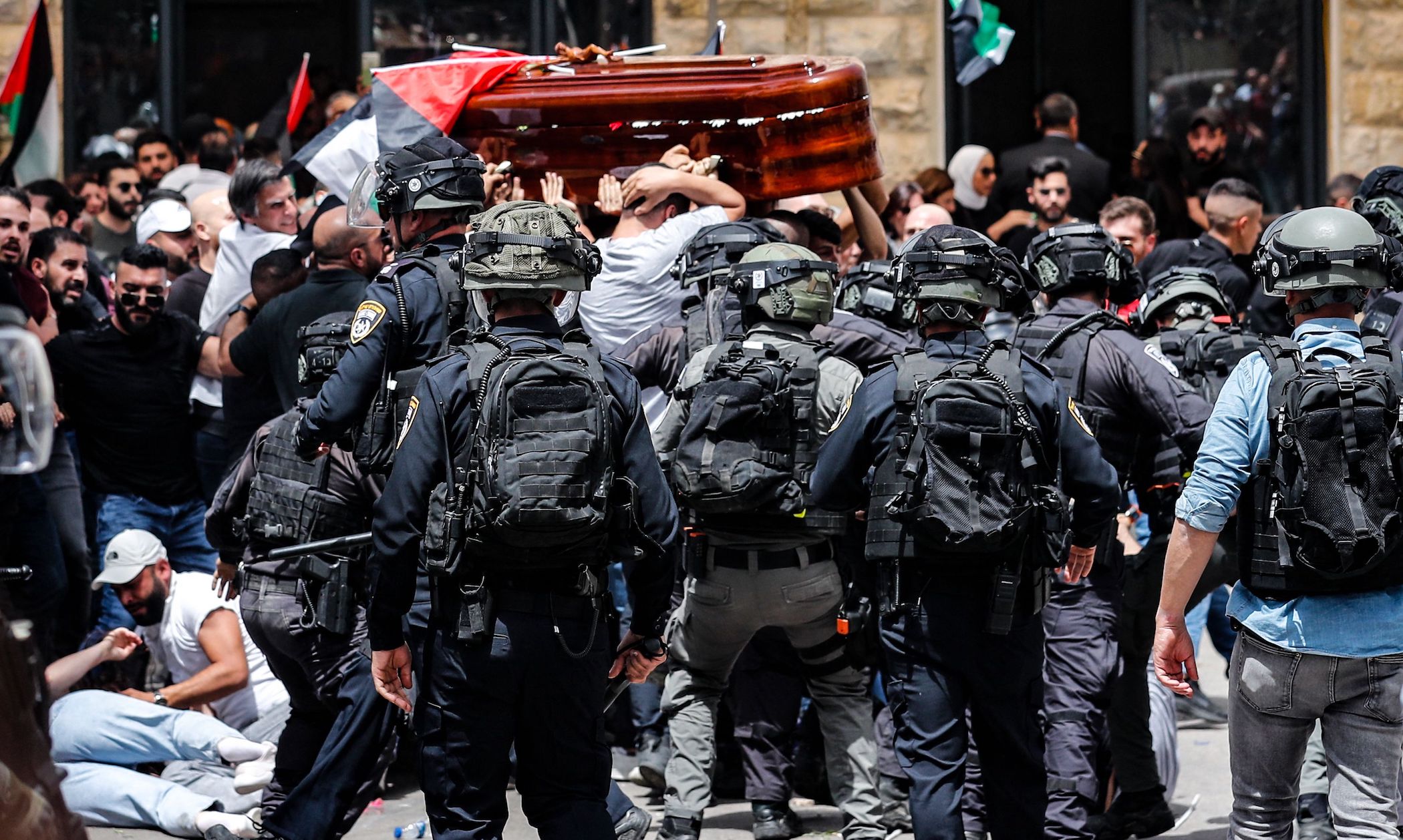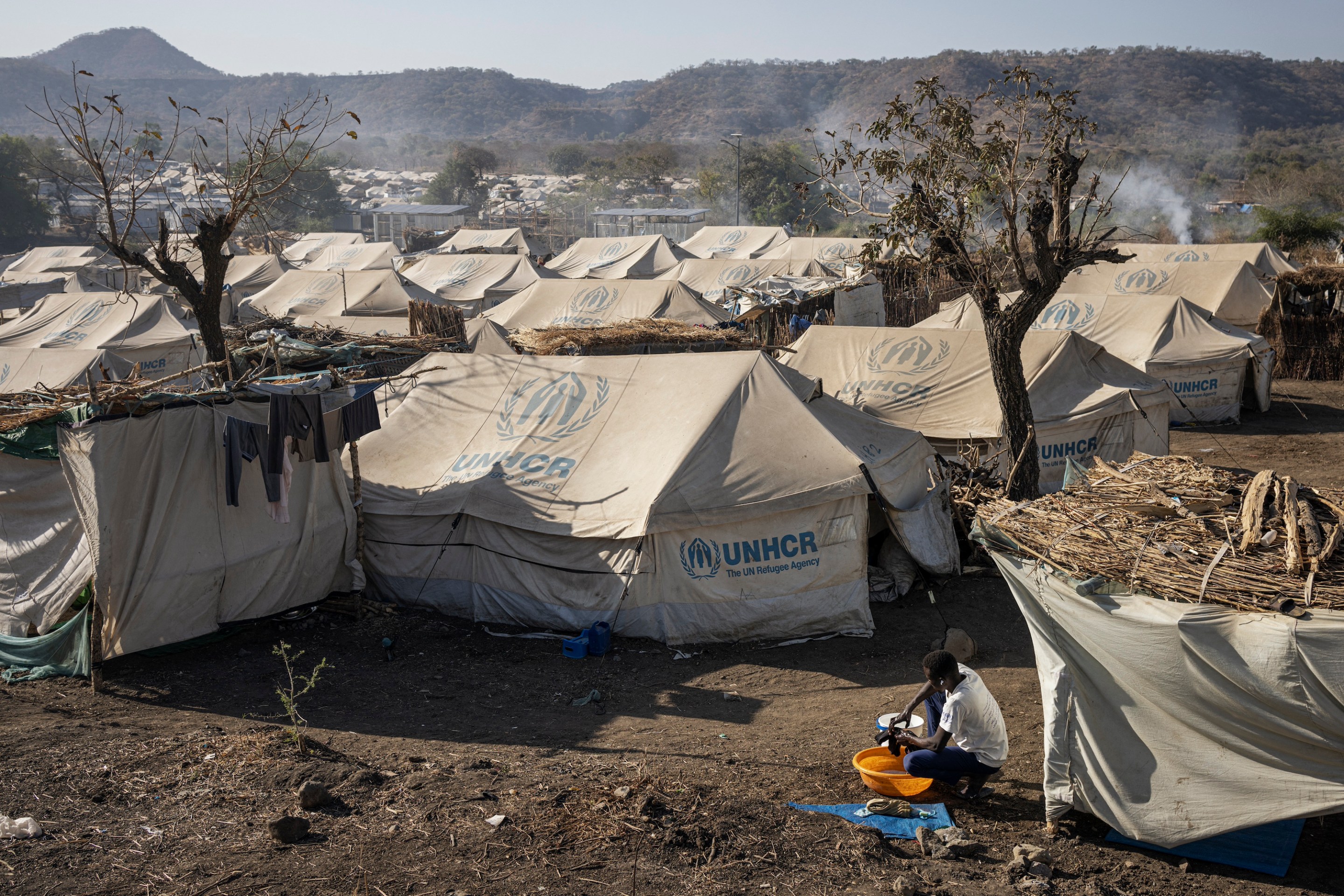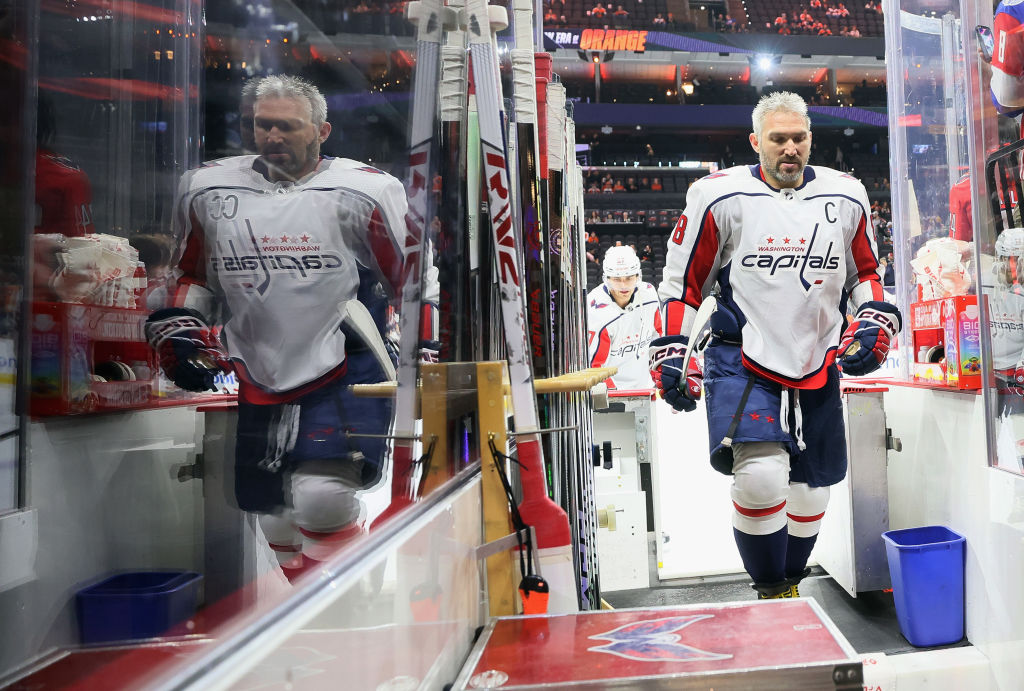The Oppressor Always Gets The Benefit Of The Doubt
4:22 PM EDT on May 13, 2022

Prominent Palestinian journalist Shireen Abu Aqleh was killed Wednesday, shot in the head by Israeli forces, according to journalists who were with her in the West Bank. As reported by Al Jazeera, the outlet she worked for, she was there to cover Israeli army raids in Jenin, and she was wearing a vest and helmet that indicated she was press. Another journalist, Ali al-Samoudi, was shot in the back but survived. Video shows shots fired at the people who tried to get Abu Aqleh's body.
If you read Al Jazeera's report on the killing of its own journalist, it clearly describes what happened and provides sources for the included details. Abu Aqleh was there with other journalists, who saw what happened firsthand—and in al-Samoudi's case, he was also shot—and said that there was no two-sided battle happening near them.
Al-Samoudi and other journalists at the scene said there were no Palestinian fighters present when the journalists were shot, directly disputing an Israeli statement referencing the possibility that it was Palestinian fire.
“We were going to film the Israeli army operation and suddenly they shot us without asking us to leave or stop filming,” said al-Samoudi.
“The first bullet hit me and the second bullet hit Shireen … there was no Palestinian military resistance at all at the scene.”
Shatha Hanaysha, a local journalist who was standing next to Abu Akleh when she was shot, also told Al Jazeera that there had been no confrontations between Palestinian fighters and the Israeli army. She said the group of journalists had been directly targeted.
“We were four journalists, we were all wearing vests, all wearing helmets,” Hanaysha said. “The [Israeli] occupation army did not stop firing even after she collapsed. I couldn’t even extend my arm to pull her because of the shots being fired. The army was adamant on shooting to kill.”
Al Jazeera
The Israeli army's response was to release a video of an "armed Palestinian" shooting down a stairway in some other area, suggesting that he shot Abu Aqleh. The human rights group B'Tselem easily proved that unless this bullet could curve around corners, there was no way that could have been who shot her.
This morning, B’Tselem’s field researcher in Jenin documented the exact locations in which the Palestinian gunman depicted in a video distributed by the Israeli army, fired, as well as the exact location in which Journalist Shireen Abu Akleh was killed. pic.twitter.com/6VbEJJuF7z
— B'Tselem בצלם بتسيلم (@btselem) May 11, 2022
This kind of information—the establishment of objective facts on the ground—doesn't stop much of Western media from presenting Israeli violence toward Palestinians as a conflict with two equal sides. There's a clear oppressor here, but that's not pointed out. The original headline on the New York Times article about Abu Aqleh's death was "Shireen Abu Akleh, Trailblazing Palestinian Journalist, Dies at 51," as if it were because of a medical condition. She died during "clashes." A number of national media outlets just couldn't figure out how a bullet ended up in a spot of Abu Aqleh's head uncovered by her helmet.
That was Wednesday. On Friday, Palestinians held a funeral in Jerusalem for Abu Aqleh. Thousands showed up to march and wave flags. Originally her casket was supposed to be carried from the hospital to a church, but a group carried her on their shoulders. Then the Israeli police took out batons and beat the mourners, including the pallbearers. This was the moment it started:
"The Israeli army is asking people if they are Christian or Muslim. If you’re Muslim you weren’t allowed in." - @ajimran
— Al Jazeera English (@AJEnglish) May 13, 2022
Israeli occupation forces are attacking Palestinians during the funeral of killed Al Jazeera journalist Shireen Abu Akleh. pic.twitter.com/Xq3VkeOCqn
The closest video of the #Israeli police suppressing the funeral procession of Shireen Abu Aqleh as the coffin was leaving the French hospital towards the cemetery pic.twitter.com/TaOsvCUUCd
— Rushdi Abualouf (@Rushdibbc) May 13, 2022
The Israeli police justified this attack by saying that someone had thrown a plastic bottle. In reality, this was going to happen whether it was a bottle, a stick, a pillow, or nothing. The Israeli police were there to provoke and instigate. They ripped the Palestinian flags from Abu Aqleh's hearse because they knew what it would do. They antagonized because they knew they had impunity.
Israeli police release video showing their officers ripping Palestinian flags off the hearse carrying @ShireenNasri coffin. pic.twitter.com/D3AOxndatP
— Raf Sanchez (@rafsanchez) May 13, 2022
You would think this video, of one group holding a casket and the other group clubbing them, would be easier to describe for Western media. Still, CBS News described the sides as "clashing" and "tussling." The Times finally figured out how to write an accurate headline ("Israeli Police Attack Mourners at Palestinian Journalist’s Funeral"), yet still included the Israeli police's nonsensical explanation for how they "took enforcement action" after "nationalist incitement." Israeli forces also claimed there were stones thrown, their proof being undated video of stones on the ground. The Times included that in their article even though they had no obligation, suggesting that maybe the oppressors deserved the benefit of the doubt here, as always.
Whenever something horrific happens to a Palestinian, the Israeli government will distract and obfuscate. After Abu Aqleh was killed, they demanded a joint investigation. But why should an entity that released an easily debunked video, of an "armed Palestinian," be trusted to conduct a sincere investigation? They lie about anything, to anyone, to retroactively justify any action and blame the Palestinians which they dominate. They would not do this if it didn't work. Western media prints this as if it were one equal side of a two-sided story.
The United States sends Israel billions of dollars, which they use to shoot Palestinians in the knee, back, or head. When you read about formula shortages, or COVID relief funding, or any government service that's been neglected, ask yourself why the U.S. seems to have no shortage of money to spend on other things.
If you liked this blog, please share it! Your referrals help Defector reach new readers, and those new readers always get a few free blogs before encountering our paywall.
Managing Editor
Read More:
Stay in touch
Sign up for our free newsletter
More from Defector
How Do You Get Americans To Care About A War?
Ethiopia's not hard to get to. It's very hard to sell as a story.




